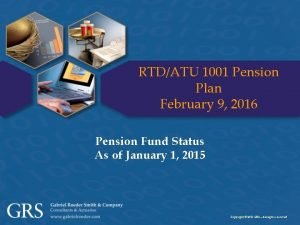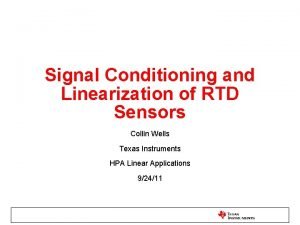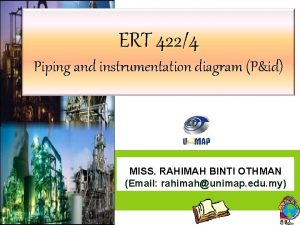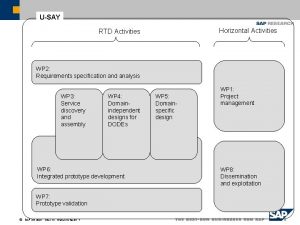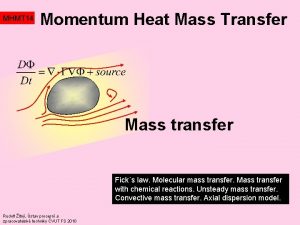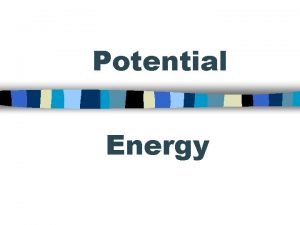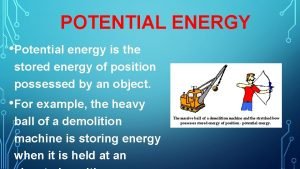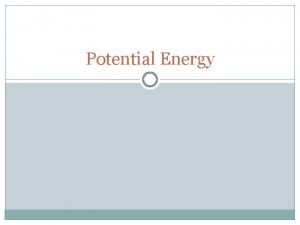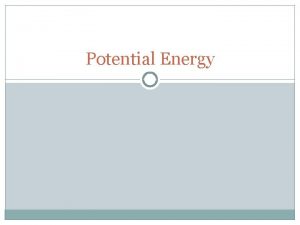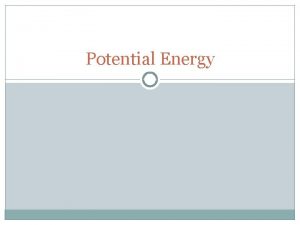European Fusion Energy RTD Potential advantages of fusion












- Slides: 12

European Fusion Energy RTD Potential advantages of fusion as an energy source Fuels: abundant, distributed world-wide Safety: no risk of major accidents Waste: no radioactive fuel core but activation of wall and structural materials: not a long-term burden (< 100 years) For example, the study “Safety and Environmental Impact of Fusion” (2001) based on conceptual 1. 2 GWelectric power plant designs: • Tritium inventory ~1 kg of mobilisable tritium • No evacuation of public, even for most severe accident • No possibility for power runaway or core melting • Volume of waste similar to fission but radiotoxicity will decrease to low value in a few decades • No proliferation risk: violations easily detectable • No constraints from materials availability even for an extensive use of fusion energy over centuries. 1

European Fusion Energy RTD Funding in the 6 th Framework Programme (2002 -2006) Framework Programmes (EC and Euratom), adopted in June 2002: Overall proposed budget : 17. 500 Mio€ (EC+Euratom) 17. 5% increase over FP 5, 3. 9% of Union’s budget, 5. 4% of civil public research spending 750 Mio€ for Fusion Energy Research, of which up to 200 Mio € for ITER 2

European Fusion Energy RTD Priority Thematic Area “Fusion Energy Research” in FP 6 ITER: preparation for possible construction, development of European site options Joint exploitation of JET and specialised devices: advance the basis for ITER operation using existing devices Fusion Physics and Concept improvements: further develop the basic concepts of fusion devices Technology: activities for ITER, and studies of materials (including the conceptual design of an international 14 Me. V neutron source); development of reactor technologies Socio-economic aspects: evaluation of economic costs and social acceptability in comparison with other energy sources. Keep-in-touch to inertial confinement and possible alternative concepts. 3

European Fusion Energy RTD European fusion research (i) • Motivation (FP 6): “Controlled thermonuclear fusion could contribute to longterm energy supply and, therefore, to the requirements of sustainable development for a reliable centralised supply of baseload electricity. ” • The outstanding feature is full integration at the European level: • Overall co-ordination by European Commission • Large joint projects (JET, EFDA/ITER) • Access to European fusion facilities for all participants • Extensive collaborations and a coherent programme • A common strategy: the reactor orientation is an explicit political choice and the essential motivation for the programme. 4

European Fusion Energy RTD European fusion research (ii) • Professional staffing: 2000 scientists and engineers (including about 260 Ph. D students) • The European Commission (Euratom) provides overall programme management (including funding) • Instruments of implementation: • The Euratom Fusion Associations - 21 “Contracts of Association” between Euratom and EU countries (+ countries Associated to the Euratom FP) • Cost-sharing contracts for candidate countries without a Contract of Association • EFDA (the European Fusion Development Agreement) • The Mobility Agreement - exchange of researchers between Associations and collaborating laboratories • Euratom Fellowships - for training young researchers 5

European Fusion Energy RTD Contract of Association - Structure Co-financing and Co-steering of all fusion related activities National Institution Euratom Steering Committee Head(s) of Research Unit Institute “A” with e. g. 3 groups Institute “B” with one group Institute “C” with one group 6

European Fusion Energy RTD Contract of Association - Financing Community co-financing in FP 6: • General support at 20% for operational costs (salaries, support services, computing, overheads etc), plus • Additional 20% support on top of the general support, up to a maximum of 100 k euro of Community funds, for projects which enhance the mutual collaboration between Associations • Preferential support at 40% for capital expenditure on major projects which have been awarded priority status by the CCE-FU (the Programme Committee for the fusion part of the Euratom programme) 7

European Fusion Energy RTD Research centres of the Fusion Associations Euratom - Latvia (Riga) ITER / EFDA 8

European Fusion Energy RTD Cost-sharing contracts • Community co-financing in FP 6 is at the general support rate of 20% for operational costs (salaries, support services, computing, overheads etc). BUT • Each contract must be individually proposed, assessed and approved. This process is quite lengthy. • The additional 20% support for enhancing collaboration between Associations is not available. Þ Provided that a “critical mass” of relevant research effort exists, the Contract of Association is a better solution for stability of funding. 9

European Fusion Energy RTD Current participation of Bulgarian groups in the European Fusion Programme 10

European Fusion Energy RTD ITER, the Next Step in fusion research • An international collaboration between Europe, Japan, Russia, and (until mid 1999) the United States • A large Tokamak, with the programmatic objective: “an integrated demonstration of the scientific and technological feasibility of fusion energy for peaceful purposes” • The Engineering Design was accomplished in July 2001. The detailed design has been approved by the ITER Parties. • Negotiations between the Parties (the European Commission acts on behalf of the EU). Includes Canada, which has offered a site: • Starting in 2001: issues of licensing and the legal framework • May 2002: the Commission’s negotiation mandate was extended by the Council of Ministers to include siting and cost issues. • A decision to proceed with construction will probably be sought in 2003. 11

European Fusion Energy RTD ITER Parameters • Basic machine parameters of the new ITER: • R 0 = 6. 2 m, a = 1. 9 m, Ip = 15 MA • Target plasma performance: • 400 -500 MW of fusion power (Q>10) in a controlled burn for at least 300 -500 s • Steady state operation at Q>5 • Technology demonstrations: • Availability and integration of essential technologies • Test reactor components • Test tritium breeding 12



